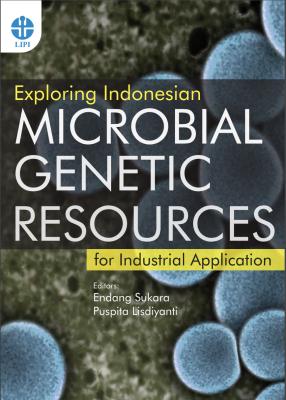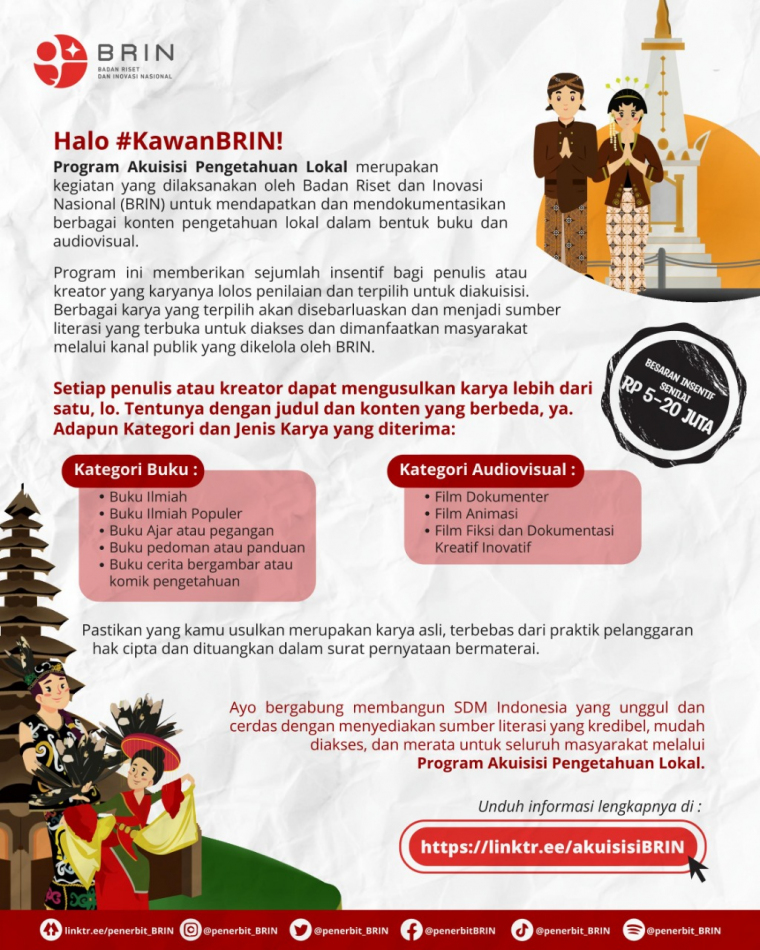Exploring Indonesian Microbial Genetic Resources for Industrial Application
Keywords:
Microbes, Industrial application, IndonesiaSynopsis
Indonesia is a mega biodiversity country consisting of various types of animals and plants, including genetic microbial resources. However, the exploration on microbes has not been yet extensively explored. This book highlights some important findings and achievements carried out by the microbiologists in LIPI on the sustainable use of Indonesian microbial genetic resources. Through this book, some successful processes of identification, characterization, and preservation in culture collections of Indonesian microbial genetic resources have been showed vividly. Some of potential microbes useful for human welfare are also described in this book, including their utilization for food, feed, health, and bioenergy. It is expected that this book can be a useful reference for those who are interested in the importance of microbial genetic resources for the prosperity of the nation as it revealed some significant findings on microbes, which have been isolated from various sources in Indonesia.
Downloads
References
Ariani, D., & Harmastini. (2010). Uji lapangan kedelai plus di Kecamatan
Imogiri, Bantul, Yogyakarta. Prosiding seminar “Pengembangan
Teknologi Pertanian“ pp. 67–71, Fakultas Biologi, Universitas Gajah
Mada Yogyakarta.
Berada, H., Noui, I., Houssaini, M. I., Gtari, M., & Benbrahim, K. F. (2012).
Ophenotypic and genotypic characterization of rhizobia isolated from
root nodules of multiple legume species native of Fez, Marocci. African
Journal of Microbiology Research, 6, 5314–5324.
Boonkerd, N., & Singleton, P. (2002). Production of rhizobium biofertilizer.
Biotechnology of Biofertilizers, 122–128. New Delhi: Narosa Publishing
House.
Graham, P. H. (1992). Stress tolerance in Rhizobium and Bradyrhizobium,
and nodulation under adverse soil conditions. Canadian Journal of Microbiology,
, 475–484.
Harmastini & Ariani, D. (2010). Uji lapangan kedelai plus di Kelurahan
Bleberan, Kecamatan Playen, Kabupaten Gunung Kidul, D. I. Yogyakarta.
Seminar Nasional Biologi. Perspektif Biologi dan Pengelolaan Sumber
Daya Hayati, Fakultas Biologi, Universitas Gajah Mada, Yogyakarta,
–115.
Hungria, M. & Vargas, M. A. (2000). Environmental factors affecting N2
fixation in grain legumes in the tropics, with an emphasis on Brazil.
Field Crops Research, 65, 151–164.
Lekatompessy, S. (1996). Evaluasi kelayakan hidrolisat pati singkong terhadap
pertumbuhan Rhizobium BTCC-B20 dan aplikasinya pada tanaman
kedelai varietas Wilis, (Skripsi, Fakultas Biologi, Universitas Nasional).
Matiru,V. N. & Dakora, F. D. (2004). Potential use of rhizobial bacteria as
promoters of plant growth for increased yield in landraces of african
cereal crops. African Journal of Biotechnology, 3, 1–7.
Nuswantara, S., Araki, M., Hasimoto, Y., Sukiman, H. I., Yamashita, M.,
Prana, M. S., & Murooka, Y. (1996). Repetitive DNA sequences and random
amplified polymorphic DNA (RAPD) patterns of rhizobia strains
isolated from Acacia mangium. Annual Report of International Center
for Biotechnology, 19, 621–629.
Nuswantara, S., Fujie, M., Sukiman, H. I., Yamashita, M., Yamada, T., &
Murooka, Y. (1997). Phylogeny of bacterial symbionts of leguminous
tree Acacia mangium. Journal of Fermentation and Bioengineering, 84(6),
–518.
Ozawa, T., Imai, Y., Sukiman, H. I., Karsono, H., & Saono, S. (1995). Isolation
and characterization of Bradyrhizobium strain from acid soils of
Indonesia and Japan. Breeding of Nitrogen Fixing Bacteria in South East
Asia Seminar, Yogyakarta.
Ozawa, T., Imai, Y., Sukiman, H. I., Karsono, H., Ariani, D., & Saono, S.
(1999). Low pH and alumunium tolerance of Bradyrhizobium strain
isolated from acid soil in Indonesia. Soil Science Plant Nutrition, 45(4),
–992.
Reghuvaran, A., Jacob, K. K. & Ravindranath, A. D. (2014). Isolation and
characterization of nitrogen fixing bacteria from raw coir pith. African
Journal of Biotechnology, 11, 7063–7071.

Downloads
Published
Series
Categories
License

This work is licensed under a Creative Commons Attribution-NonCommercial-ShareAlike 4.0 International License.






























